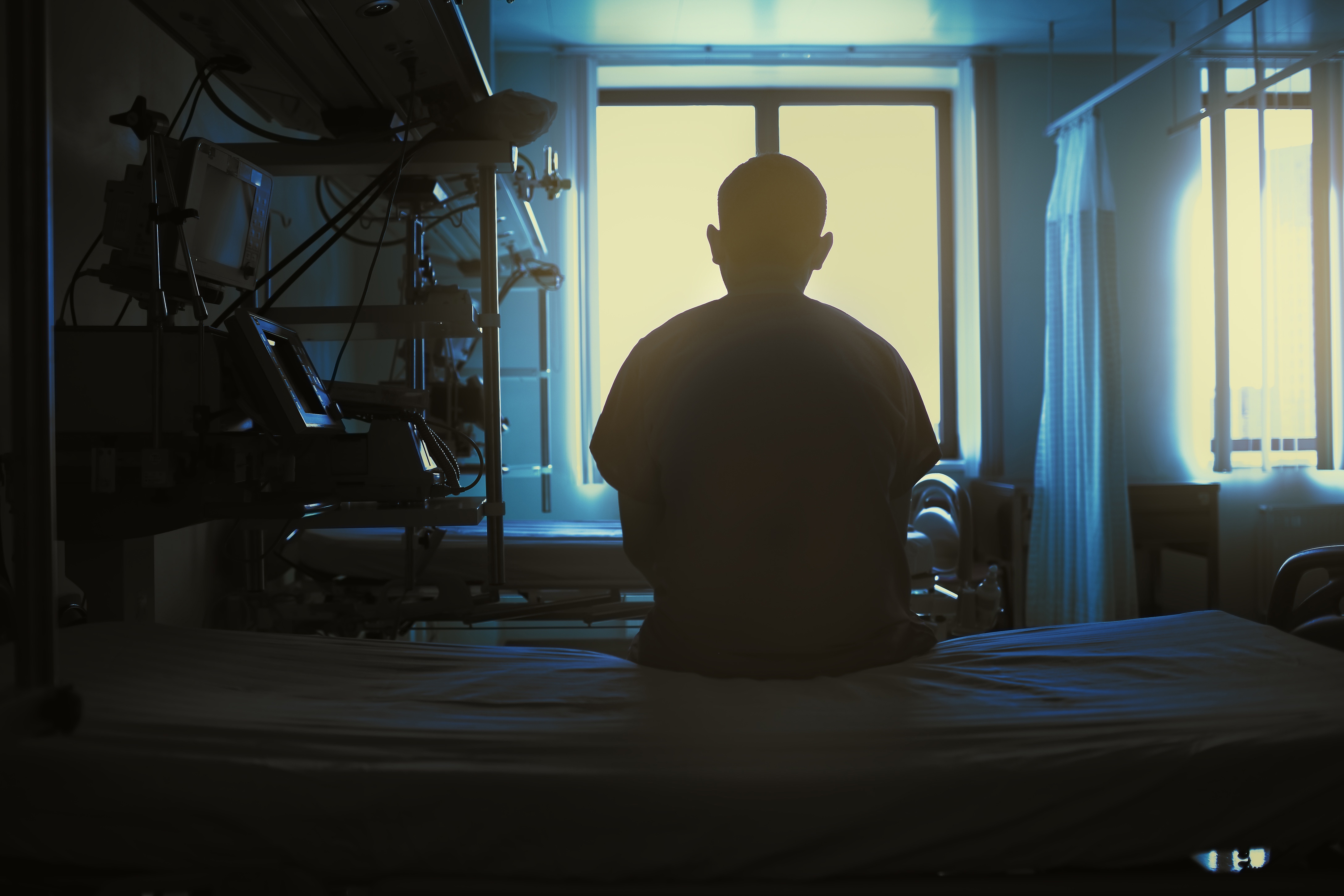
Health & Medicine
Giving prisoners a sporting chance

New research highlights the opportunities to improve care for people in prison who are dying from a progressive, life-limiting illness
Published 14 July 2020
Consider for a moment how it might feel to be told you have a diagnosis of advanced cancer. Uncertainty? Fear? Grief?
Everything is different, and your family and friends matter more than ever.
Now consider the same advanced cancer diagnosis and picture that you are in prison when you get this news. What does the lens of ‘prison’ mean when living with and dying from serious illness? And how do clinicians providing care perceive the effects of being in prison for patients facing end of life?

With an increasing and ageing prisoner population, there are now more people who are likely to face their end of life in prison. Of those prisoners who die in Victoria, approximately 38 per cent will spend their final weeks or months of life in a secure, guarded public hospital ward.
Our research uncovered the opportunities perceived by health professionals to improve the models of care for prisoners dying with progressive and life-limiting illnesses.

Health & Medicine
Giving prisoners a sporting chance
Recently published in the Journal of Pain and Symptom Management, we explored the perspectives of public hospital-employed doctors, nurses and allied health staff from a range of disciplines about their experiences of providing care for dying prisoners in the public hospital setting.
Health professionals described the unique constraints and obstacles faced by people in prison across a range of areas of care, and for themselves, as they strove to provide optimal end-of-life care for prisoners.
They described the challenges in providing access to the best pain relief and facilitating death in a desired site of care.
They also described a system which at times requires prisoners to forgo their minimum security incarceration and be transferred to a maximum security facility in order to access specialist hospital care.
Health professionals also identified the opportunities for improved clarity of protocols around some of the processes for dying prisoners – such as allowances to remove shackles when providing care, as well as considerations for healthcare professionals in advocating for compassionate release.

The care of prisoners dying from life-limiting illness matters to health professionals.
Here, we look at their experiences through the lessons of one case uncovered by our research.
George* is a prisoner in a minimum security prison in regional Australia.
He has less than 12 months remaining of his sentence when he develops symptoms of weight loss and worsening abdominal pain. To access specialist hospital care, George must be transferred to a metropolitan maximum security prison.

“They lose their cell and they lose their job, so they’re effectively discharged from the [minimum security] prison even if it’s just for an outpatient [healthcare] appointment… that’s a big deal.”
Health professionals expressed their unease that prisoners like George have to make decisions to accept, decline or delay treatment that are influenced and constrained by the fact that access to this care is only available through a maximum security prison.
These constraints on prisoner health decisions could at times result in late or urgent presentation to hospital with an advanced disease.
George was diagnosed with an advanced illness. He began regular treatment that meant frequent visits to the hospital.
Health professionals described the requirements for all prisoners like George to be accompanied by security guards for their clinic appointments and inpatient stays in the secure hospital ward, with an inevitable impact upon the way they provide care.

“The lack of any sense of building a therapeutic alliance with somebody hovering over you with arms… there’s no private space, you couldn’t go off in a private room. It absolutely puts a barrier in the therapeutic alliance with the patients.”
George’s condition continues to deteriorate.
Health professionals describe the difficulties they anticipate in providing best pain relief for prisoners, owing to the challenge of patients leaving hospital and returning to their prison cell, where much needed short-acting, breakthrough pain medications are not readily provided.

Politics & Society
Vulnerable women trapped by changes to bail laws
“It’s almost impossible for a patient in a prison cell to be able to access breakthrough pain medications”.
George is admitted to the secure prison ward at the hospital to receive the care he needs. Being incarcerated means prisoners have lost their choice around where they will die.
Health professionals described the challenges they feel in providing specialist care for dying prisoners in the face of this loss of choice.
“…a major foundational part of palliative care is trying to achieve care in the desired site of care, and achieve death in the desired site of death. I think it grates against us, because… a person who’s incarcerated has lost the privilege of deciding where they are”.
For prisoners like George, health professionals perceived opportunities for further clarity of correctional services processes, protocols and aspects of security. Uncertainty around these protocols can impact the opportunities for advocacy and optimal care for prisoners at the end of their life.

“No one knew who to phone to say ‘can we get the shackles off?’. Apparently … there is a way of doing it.”
Similarly, the pathway and responsibility for applications for compassionate release or a down grade of sentence for prisoner patients was often unclear.

Health & Medicine
Too young for Facebook, old enough for prison?
“It is clunky, because you don’t really know who’s going to make the approach [for early release] and where you’ve got to approach. It’s not mapped out. There’s not a nice pathway of how to get that happening.”
What if there were clearer processes in place for all dying prisoners? What if different models of care meant George did not have face a further loss of liberty with his advanced progressive disease?
Our research highlights these opportunities as shared by health professionals striving for quality end-of-life care for prisoners dying of life-limiting illness.
* Names have been changed to protect the privacy of patients and study participants.
Banner: Shutterstock